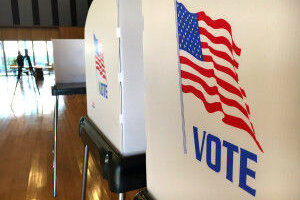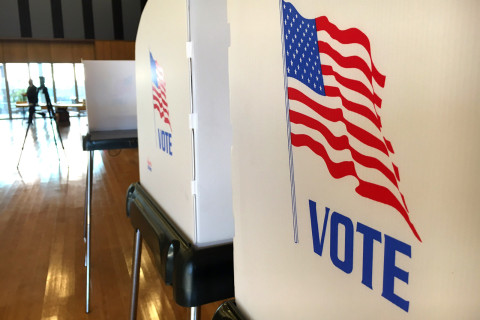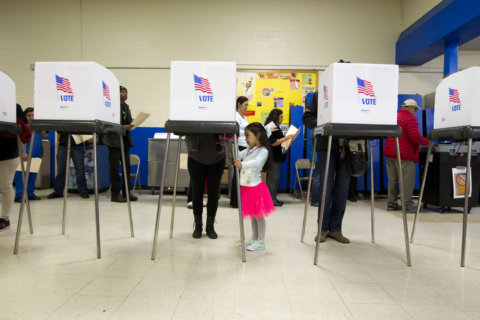WASHINGTON — About 80,000 Maryland voters who changed their address or party affiliation via the Maryland Motor Vehicle Administration’s online store or MVA kiosks are being notified that they’ll have to cast provisional ballots in Tuesday’s primary.
As a result, Maryland’s Boards of Elections officials say they want voters to know how the provisional ballot system works.
“The advice to voters is always: check your voter registration to make sure it is up to date and to make sure you know where your polling place is,” said Marjorie Roher, public information officer with Montgomery County’s Board of Elections.
Affected voters who tried to change their address via the MVA website or kiosks between April 22, 2017 and June 5, 2018 have been told to make sure they go to their new polling place. (Look up your polling place here.)
Roher said it’s easy for voters to check their registration online.
Voters who use a provisional ballot may find it doesn’t take much longer than voting using the optical scanners, Roher said. Provisional-ballot voters will be directed to a provisional voting table where they’ll fill out a form. Then the election judge provides the voter the ballot.
“They’ll fill out the ballot — in secret — and that ballot will be put into an envelope, and that envelope will be placed in locked security bag,” Roher said.
Roher said it’s important that voters know that elections officials will verify the voter’s eligibility by looking at the form outside of the envelope. They do not examine the ballot — so how a resident voted remains secret.
Below is a video explaining how the provisional voting process works:
Roher said voters should not be discouraged from casting their ballot, and they should know that it will be counted.
“Essentially, a provisional ballot is the same as a ballot you would scan into the machine. The difference is it does not get scanned on Election Day,” she said. The process is similar to how absentee ballots are tabulated in the days after the election. Then and only then, said Roher, are the results of the election certified.
While Roher said elections officials are familiar with the provisional ballot process, they may ask for ID from a voter. A driver’s license, a state-issued ID or a utility bill can be used for identification if it’s requested, she said.
MVA Administrator Christine Nizer told WTOP that the problem with the voter registrations was rooted in what she called a “customer enhancement” in the system that was designed to allow residents to change the address or party affiliation on their voting registration through the MVA e-store or at MVA kiosks. Nizer said a coding error prevented the information from being forwarded to the Maryland State Board of Elections and that it’s being fixed this week.
MORE MARYLAND ELECTION NEWS
- Maryland primary election guide 2018
- 2018 Md. Primary Guide: Crowded field of candidates seek Dem. nomination for governor
- 2018 Md. Primary Guide: US House, Senate races
- 2018 Md. Primary Guide: House of Delegates, state Senate races to watch
- 2018 Md. Primary Guide: 10 candidates jockey for Prince George’s County Executive seat
- 2018 Md. Primary Guide: Cheat sheet to Montgomery Co. exec, county council races
Editor’s note: This story has been updated to include the updated number of voters impacted by the programming error.








